#Kerkhoffhaus
Photo










Rostock (No. 2)
In the 11th century Polabian Slavs founded a settlement at the Warnow river called Roztoc (*ras-tokŭ, Slavic for “fork of a river”); the name Rostock is derived from that designation.
The Danish king Valdemar I set the town on fire in 1161. Afterwards the place was settled by German traders. Initially there were three separate cities:
Altstadt (Old Town) around the Alter Markt (Old Market), which had St. Petri (St. Peter’s Church),
Mittelstadt (Middle Town) around the Neuer Markt (New Market), with St. Marien (St. Mary’s Church) and
Neustadt (New Town) around the Hopfenmarkt (Hop Market, now University Square), with St. Jakobi (St. James’s Church, demolished after World War II).
In 1218, Rostock was granted Lübeck law city rights by Heinrich Borwin, prince of Mecklenburg.
Source: Wikipedia
#Hanseatic City of Rostock#Hansestadt Rostock#Mecklenburg-Vorpommern#summer 2020#original photography#travel#architecture#cityscape#vacation#Mecklenburg-Western Pomerania#Kerkhoffhaus#façade#exterior#Standesamt und Archiv der Hansestadt Rostock#terra cotta#Renaissance#Bartold Kerkhof#detail#Große Wasserstraße 30#Wollenweberstrasse 51#Europe#Germany#Deutschland
11 notes
·
View notes
Photo

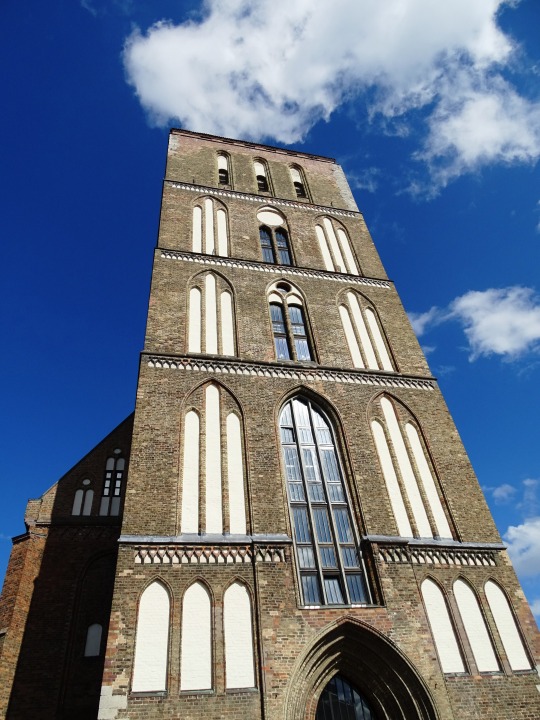
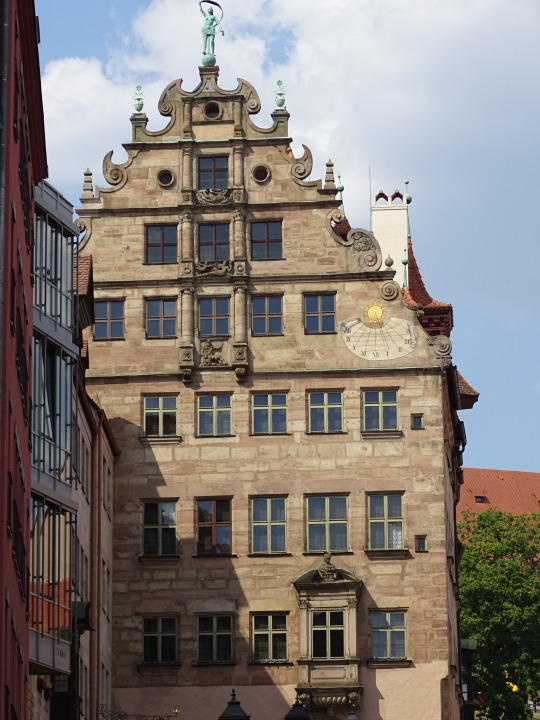
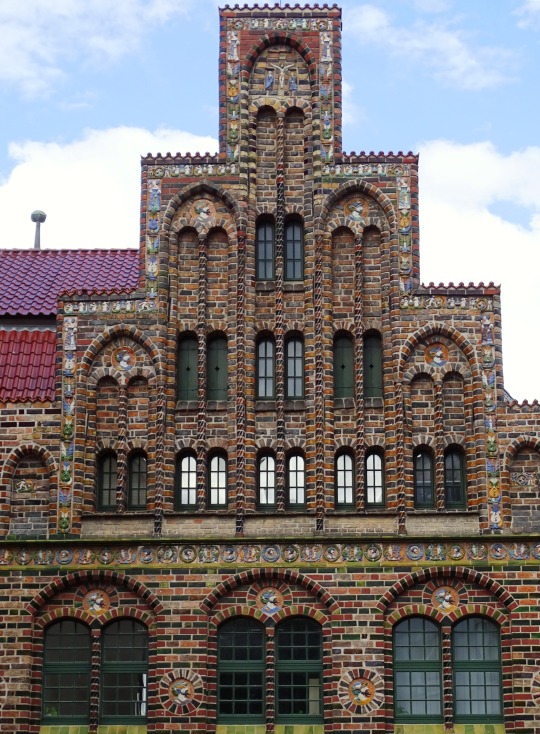
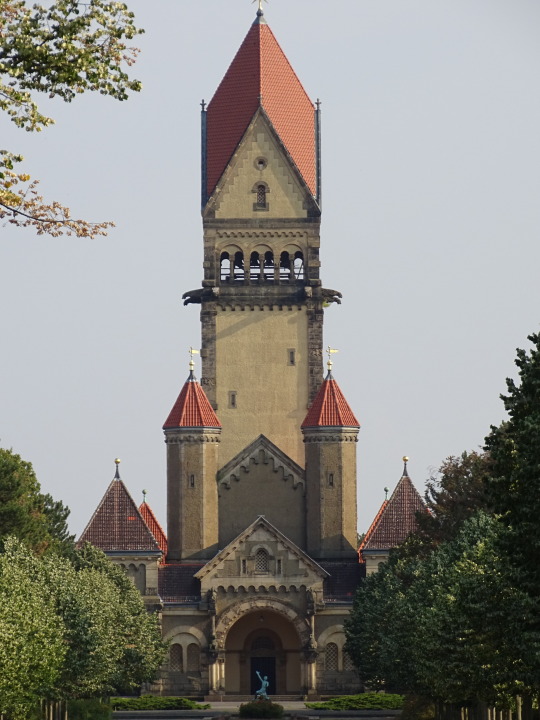
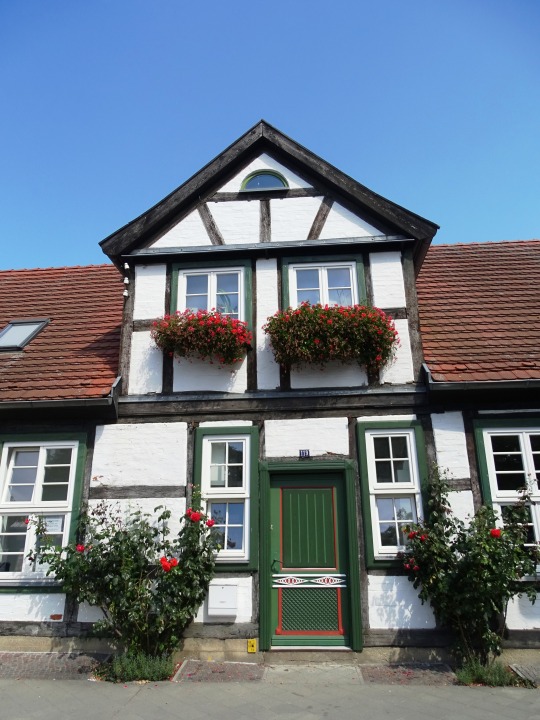



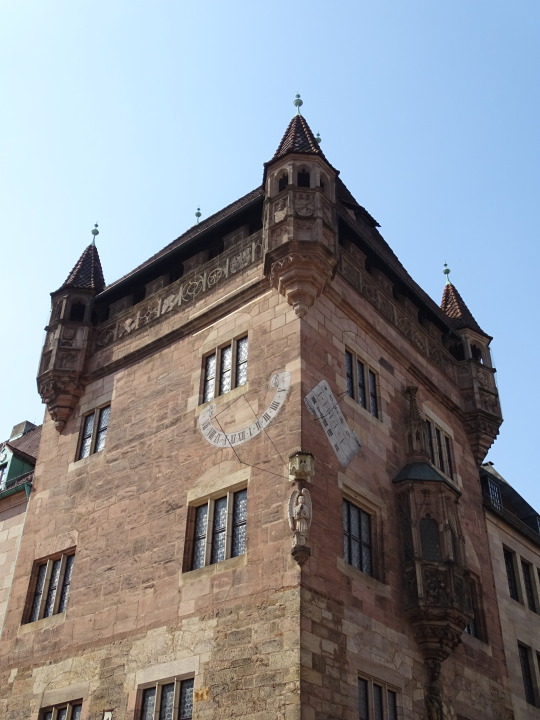
Architecture Day
Created in 2005 by the Union International des Architects (UIA), Architecture Day is a day to show appreciation for the work architects do and to celebrate some of the great global architectural works.
Architecture is incredibly important and architects have the potential to shape all of our lives through their hard work. In addition, architecture plays an essential role in planning for the future, sustaining population growth and tackling a number of social problems.
Events are held in different locations every year, bringing architects, engineers, planners, and developers together to showcase their work, discuss future projects, debate current issues and plan new business ventures. So if you work in the industry, why not go along and join in?
For those who do not work within the field of architecture, simply take a few moments out of your day to appreciate the architectural feats that you usually take for granted during your everyday life.
Source
#WorldArchitectureDay#World Architecture Day#first Monday in October#travel#summer 2020#5 October 2020#Rostock#City Hall#architecture#cityscape#original photography#Ständehaus Rostock#Nikolaikirche#Nuremberg#Nürnberg#Bavaria#Bayern#Kerkhoffhaus#Warnemünde#Saxony#Leipzig#Sachsen#Krematorium Leipzig#Fembohaus#Nassauer Haus#Mauthalle
4 notes
·
View notes
Photo










National Tile Day
On February 23, National Tile Day recognizes a timeless element of architecture and design. Around the world, tile plays a variety of roles. From the modest to the sublime, tile proves to be versatile and attractive.
Historically, only the wealthy could afford tile in their homes. The expense of handmade or small batch production meant tiles were difficult for the ordinary person to obtain. With the advent of the industrial revolution, tile not only became more affordable but the designs and features expanded with the technology.
Beautiful tile finds its way into every room of the home, outdoor spaces, commercial and industrial buildings by providing an infinite number of styles through color, texture and dimension. The durability and energy efficiency of tile adds value, and no material is more sustainable or has lower maintenance costs.
HOW TO OBSERVE
Take time to appreciate the quality craftsmanship of the tile work around you. If a remodel or building is in your future, consider tile in your design.
HISTORY
Coverings, the largest international tile & stone show in North America, founded National Tile Day in 2017 to shine a spotlight on the benefit of tile in residential and commercial design.
Source
#National Tile Day#NationalTileDay#23 February#Kerkhoffhaus#Rostock#Germany#original photography#travel#vacation#architecture#Napa#USA#façade#Rawlins#Medinah Temple#Chicago#Carbide & Carbon Building#Riverwalk Gateway by Ellen Lanyon#New York City#Miami Beach#exterior#tourist attraction#cityscape#landmark#summer vacation
1 note
·
View note
Photo
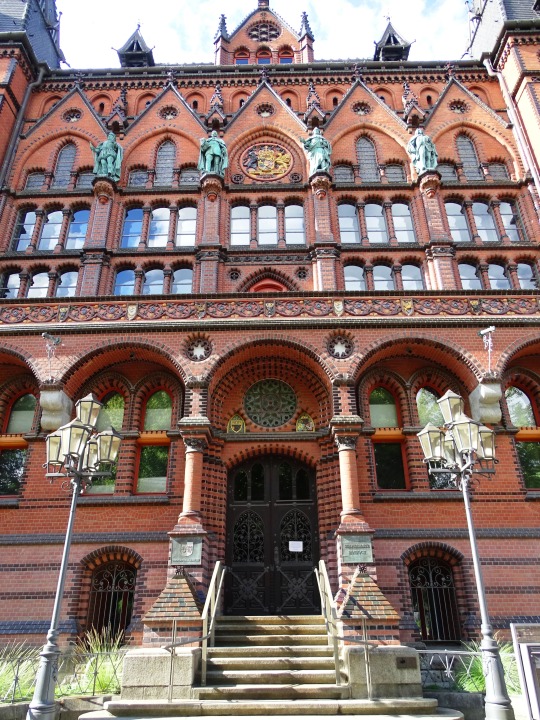

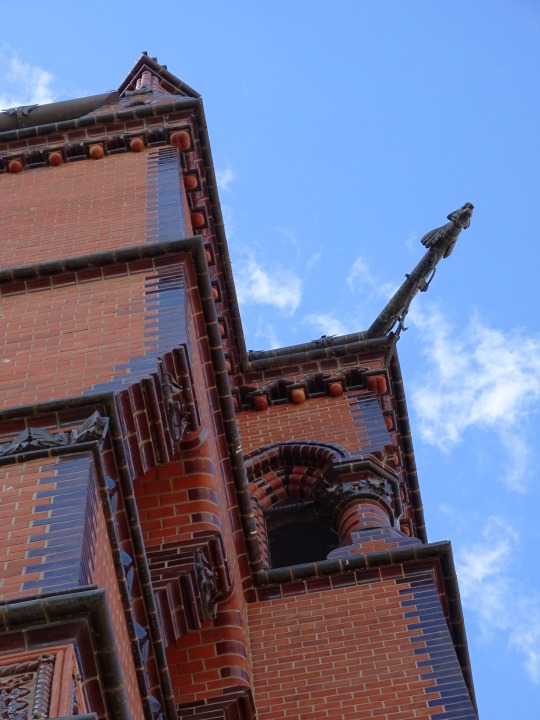
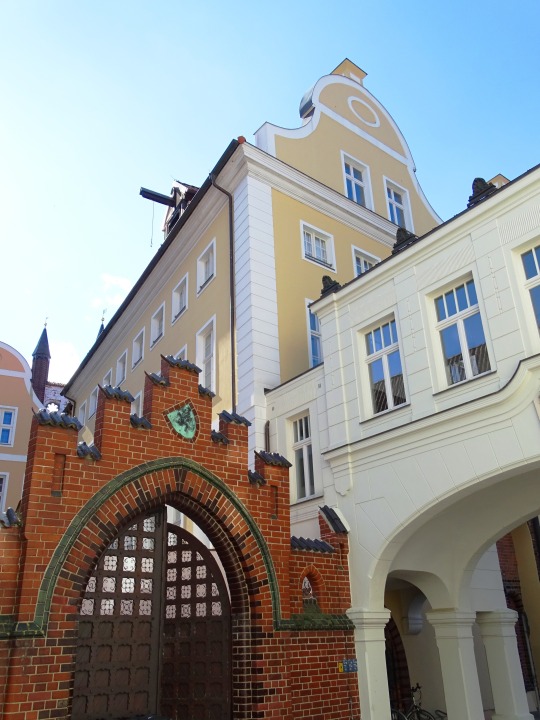
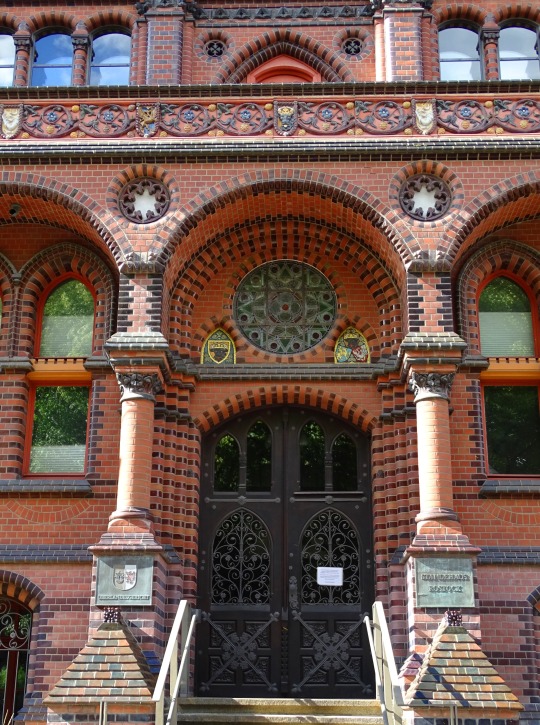
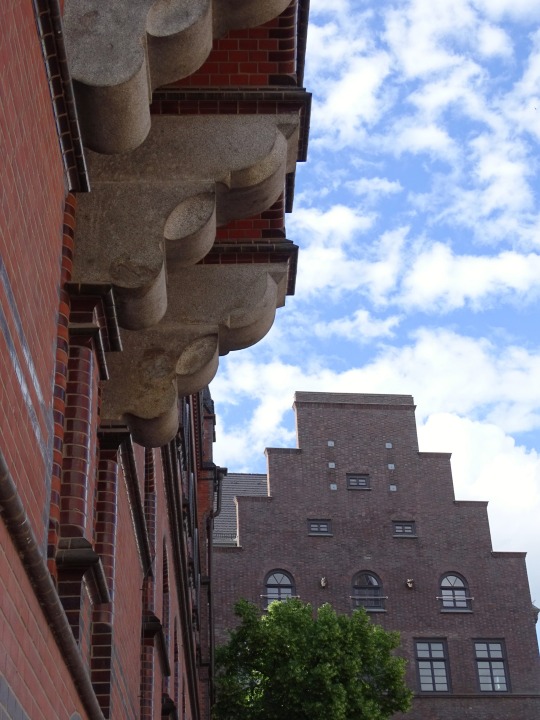
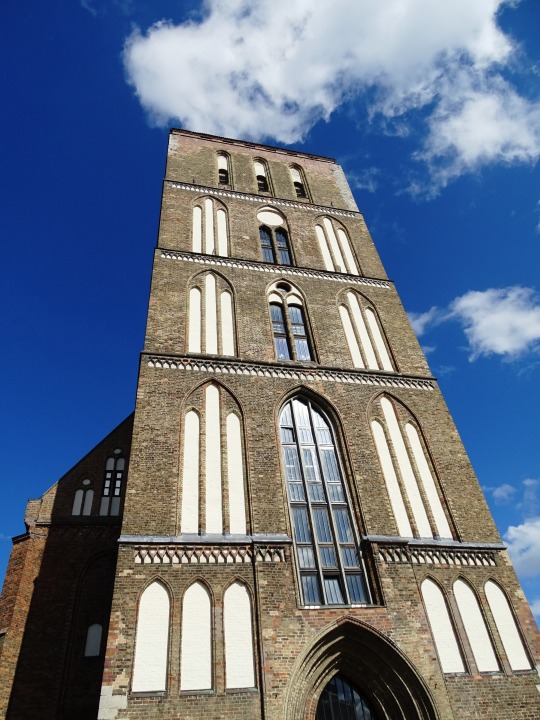



Ständehaus Rostock and other Buildings (No. 2)
In the 20th century, important aircraft manufacturing facilities were situated in the city, such as the Arado Flugzeugwerke in Warnemünde and the Heinkel Works with facilities at various places, including their secondary Heinkel-Süd facility in Schwechat, Austria, as the original Heinkel firm's Rostock facilities had been renamed Heinkel-Nord. The world's first airworthy jet plane prototype made its test flights at their facilities in what used to be named the Rostock-Marienehe [de] neighborhood (today's Rostock-Schmarl community, along the west bank of the Unterwarnow estuary).
In the early 1930s, the Nazi Party began to gain among Rostock's voters, many of whom had suffered economic hardship during the 1920s. In elections in the summer 1932, when the Nazis achieved 37.3 percent, their greatest national showing in a free election, they polled 40.3 percent in Rostock. A year later, after the Nazi seizure of power and the suppression of other political parties, the Rostock city council (Stadtrat) was composed entirely of Nazis. During Kristallnacht on 10 November 1938, the synagogue in Rostock's Augustenstrasse was destroyed by arson and dozens of Jews were beaten and imprisoned.
Feverish rearmament by the Nazi regime boosted Rostock's industrial importance in the late 1930s, and employment soared at the Heinkel and Arado factories, and at the Neptunwerft shipyard. The city's population grew from 100,000 in 1935 to 121,192 in 1939.
During World War II, Rostock was subjected to repeated and increasingly heavy bombing attacks, especially by the British Royal Air Force. Targets included the Heinkel and Arado plants and the shipyard, but churches and other historic structures in the city centre were also heavily damaged, among them the 14th-century Nikolaikirche (St Nicholas Church) and Jakobikirche (St Jacob's Church). The ruins of the latter were torn down in 1960.
The city was eventually captured by the Soviet 2nd Belorussian Front on 2 May 1945 during the Stettin-Rostock offensive operation.
After the war, Rostock – now in the German Democratic Republic – became East Germany's largest seaport. The state expanded the national shipyards in the district of Warnemünde. The city's population, boosted in part by resettled ethnic German refugees who had been expelled from territories in the east, increased in the GDR years to a peak of 260,000. Following the reunification of Germany in 1990, Rostock lost its privileged position as the No. 1 port of the GDR, and the city's population declined to about 200,000. However, after 2006, the population increased again. Today, Rostock and Warnemünde are significant tourist destinations on the Baltic Sea.
Since the late 20th century, migrants have come to Germany from Turkey and Africa seeking work. In response to high rates of joblessness and increased levels of crime, some Germans took part in the Rostock-Lichtenhagen riots which occurred from 22 to 24 August 1992 in protest.
Source: Wikipedia
#Kerkhoffhaus#Ständehaus Rostock#city hall#town hall#Rathaus#Stadthaus#Hanseatic City of Rostock#Hansestadt Rostock#Germany#travel#summer 2020#architecture#original photography#Deutschland#landmark#Mecklenburg-Vorpommern#Mecklenburg-Western Pomerania#Walldienerhaus#Nikolaikirche#Steintor#façade#cityscape
4 notes
·
View notes